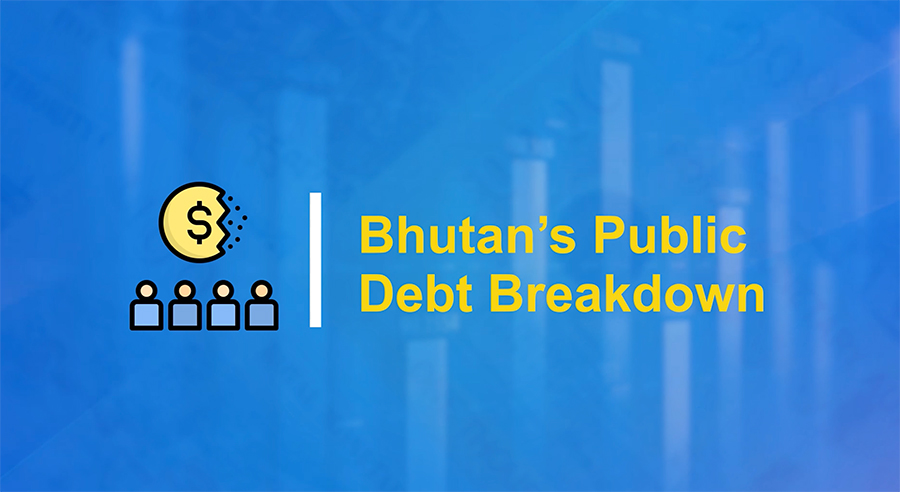 Bhutan’s public debt burden is expected to remain high in the next decade or so, until at least the 2037-2038 financial year. Currently, at around Nu 293bn, or about 97 per cent of its GDP, the figure nearly matches the size of its economy. This is according to the third quarter Public Debt Situation report the finance ministry published recently.
Bhutan’s public debt burden is expected to remain high in the next decade or so, until at least the 2037-2038 financial year. Currently, at around Nu 293bn, or about 97 per cent of its GDP, the figure nearly matches the size of its economy. This is according to the third quarter Public Debt Situation report the finance ministry published recently.
India holds 65.5 per cent of Bhutan’s external debt, mostly in Indian rupees. Bhutan’s debt consists of two main types: external debt and domestic debt. However, external debt, which is borrowed from other countries or international institutions, makes up the bulk of Bhutan’s total debt.
As of the latest figures, the external debt stands at around Nu 269.14bn, accounting for 91.9 per cent of Bhutan’s total debt.
On the other hand, Bhutan’s domestic debt remains at Nu 23.6bn, representing 7.8 per cent of the country’s GDP. This portion of the debt is borrowed from Bhutanese banks and institutions, typically through government bonds and treasury bills.
Bhutan’s debt has steadily risen, with the debt-to-GDP ratio reaching 92.9 per cent in December 2022, increasing to 95.2 per cent in September last year, and further to 97.1 per cent by December. This indicates that the country’s borrowing is outpacing its economic growth. However, the Ministry of Finance, in the report, assures that Bhutan’s debt remains manageable.
The report says that Bhutan’s debt remains manageable for several reasons. Firstly, most of the loans are tied to hydropower projects, which are expected to generate steady income. Secondly, 95.7 per cent of Bhutan’s debt has fixed interest rates, meaning repayment costs won’t increase if global interest rates rise.
Finally, the loans have long repayment periods, with an average maturity of 11.6 years, giving the government enough time to repay the debt.
To service its debt, Bhutan has allocated 13.32bn in the 2024–25 fiscal year. This includes Nu 10.67bn for external debt and Nu 2.65bn for domestic debt.
The report says that debt repayments will remain high until at least 2037–2038 due to the start of repayments for major hydropower projects.
A significant spike is expected in 2027–2028 when Bhutan repays two large loans from India, the Standby Credit Facilities, borrowed for Indian rupee needs. However, after 2038-39, with the repayment of hydropower loans, repayments are expected to decline and stabilise.
Karma Samten Wangda
Edited by Kipchu








